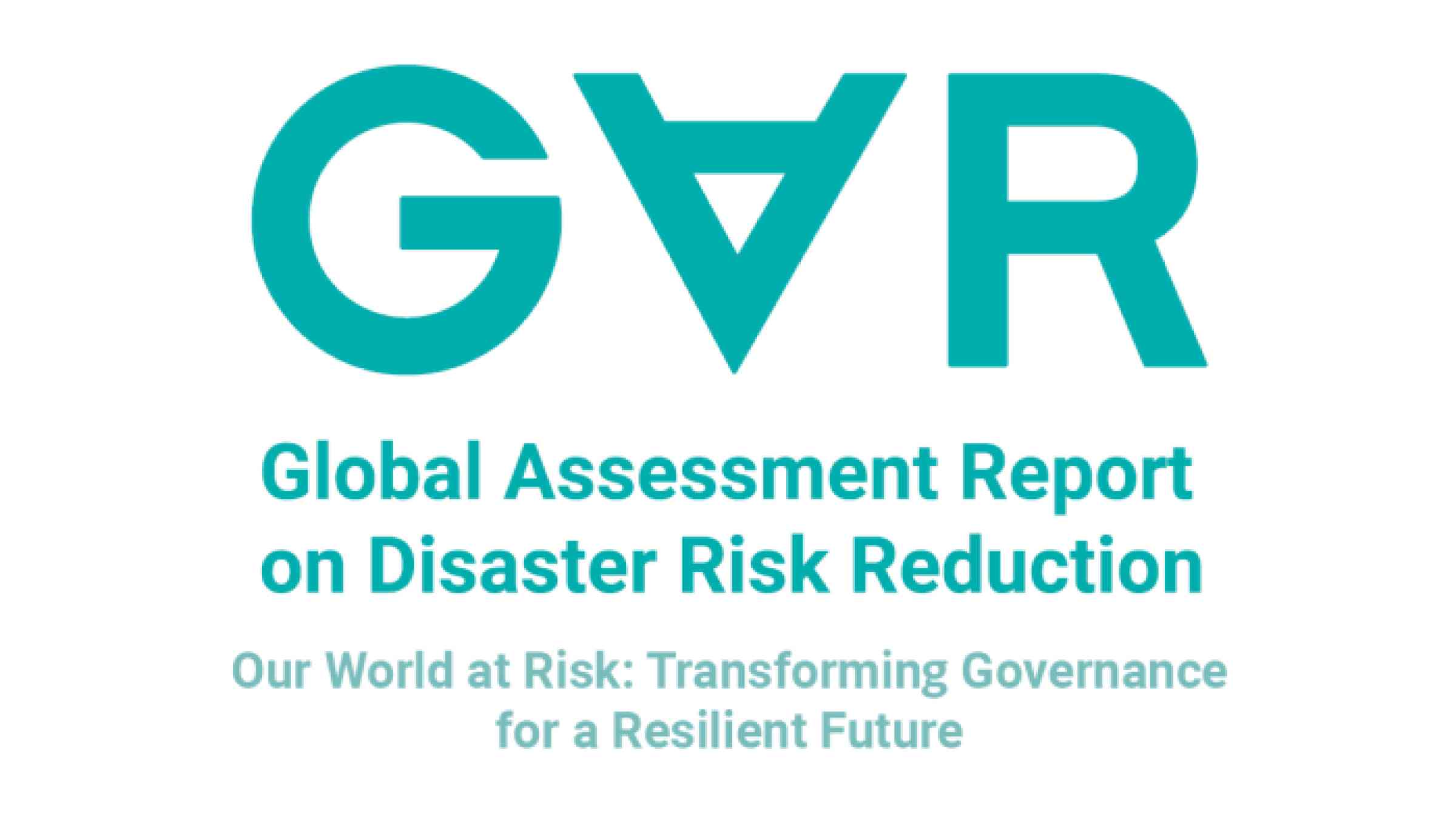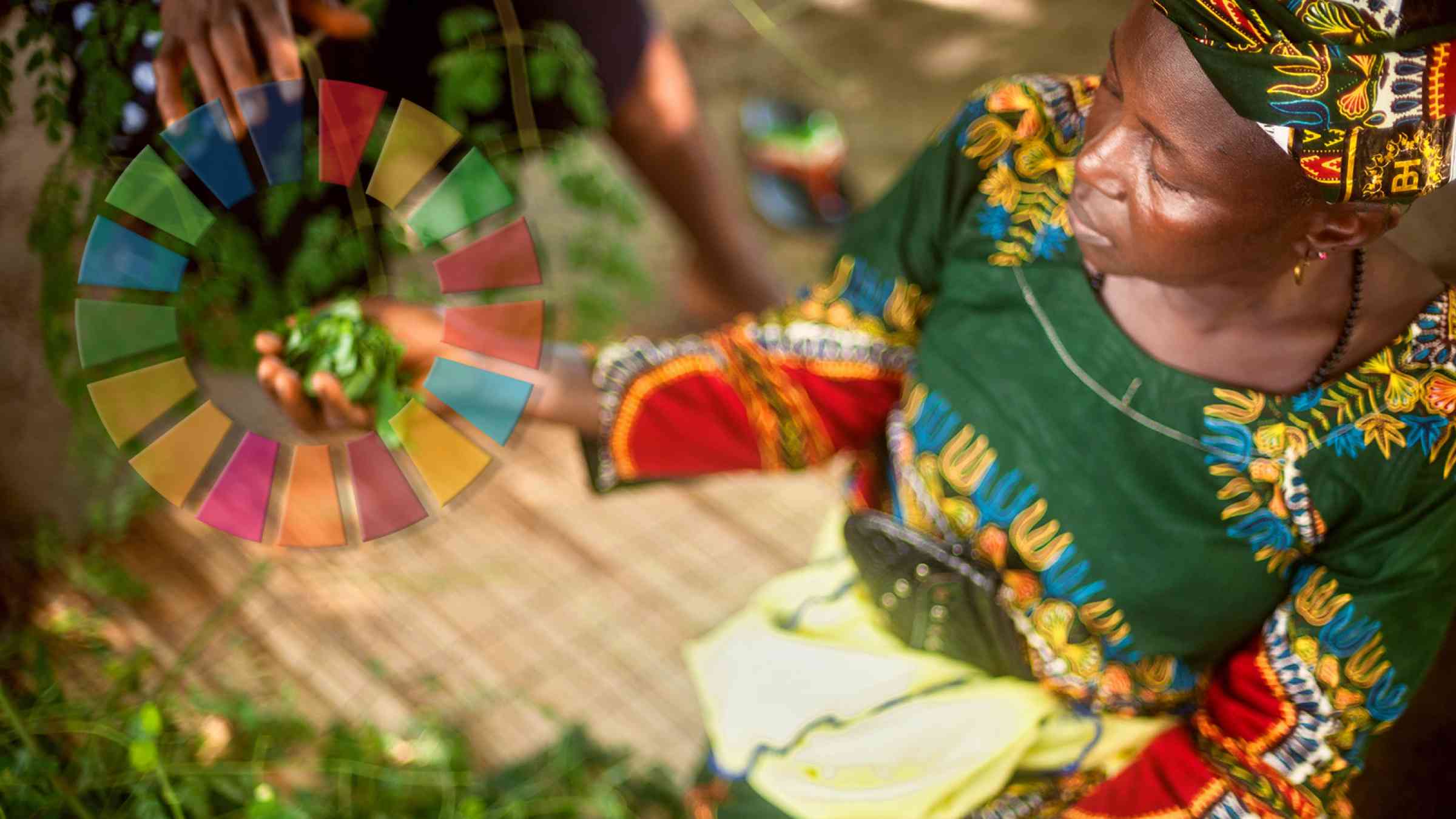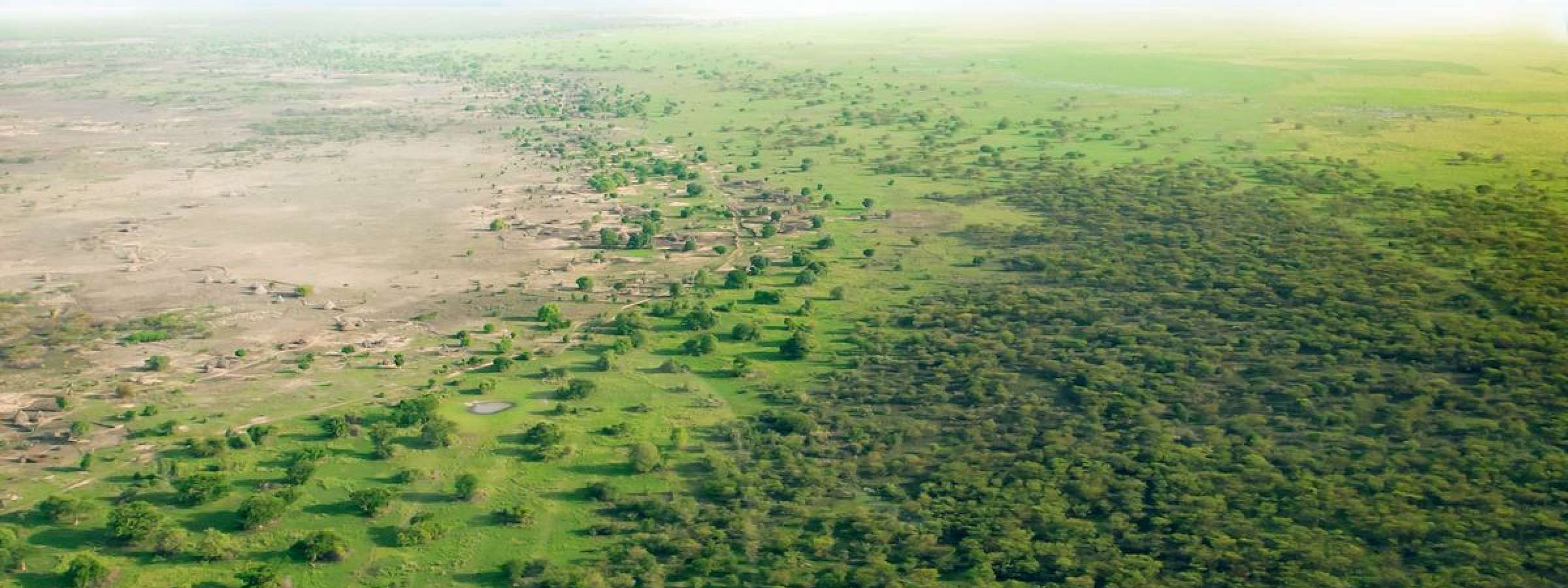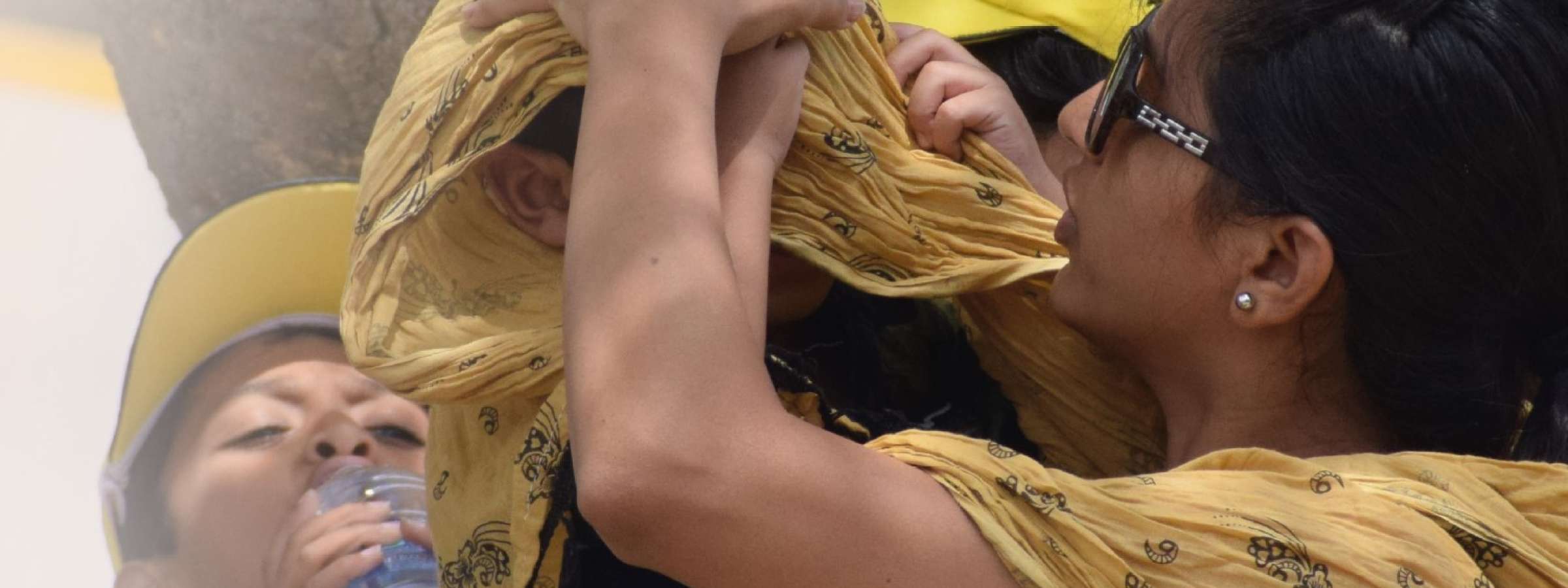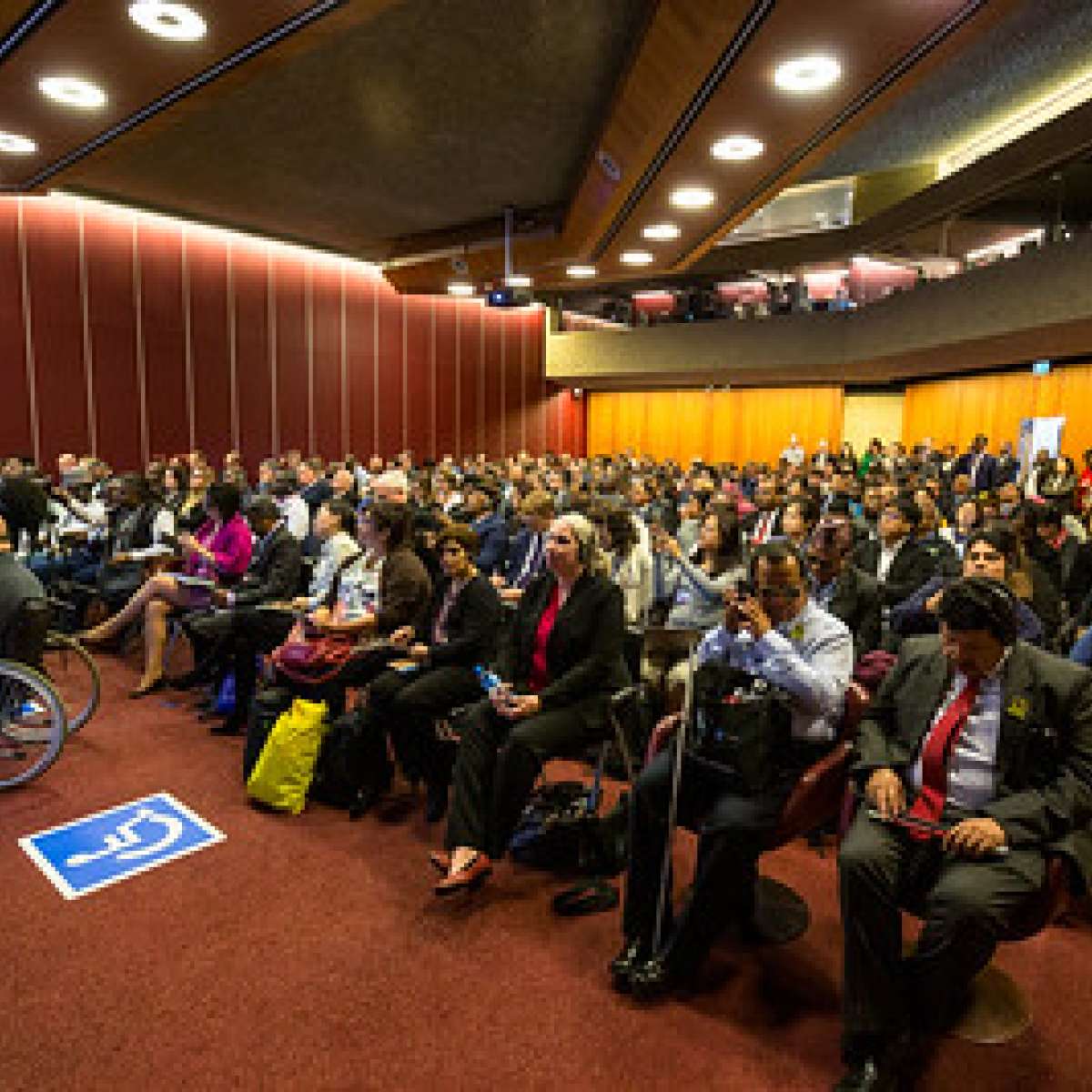GAR Special Report 2023:
Mapping resilience for the Sustainable Development Goals
Disasters are reversing global development. Urgent action is needed to build resilience into every decision we make.
Growing inequities and pressures on the planet are reversing hard-won development gains.
Humanitarian needs are also rising, as disasters and conflict create enormous human suffering.
The UN Global Assessment Report on Disaster Risk Reduction (GAR 2023) highlights how resilience can be strengthened to withstand and respond to shocks. This includes investments in early warning systems where the benefits triple in vulnerable contexts because of their proven ability to reduce damage.
Keep scrolling to explore the highlights.
If we are to achieve the SDGs, it is vital that we act to build resilience through our societies and governance models. Otherwise, poverty and inequality will continue. This report demonstrates that action is possible in every region. Both to reduce risk and create positive feedback loops.
Ms. Amina Mohammed, United Nations Deputy Secretary-General
Addressing the climate polycrisis
The impacts of climate change are causing existing hazard events to become more intense and occur with greater frequency. These impacts combine with other risks and threats such as conflict, epidemics or inflation, creating compound crises, a phenomenon increasingly referred to as a polycrisis.
To reverse a downward spiral, countries and communities need to build systems that can prevent or better manage risk. This ability to withstand risk, and recover from disasters, in a manner that is transformative and bounces forward, is at the root of resilience.
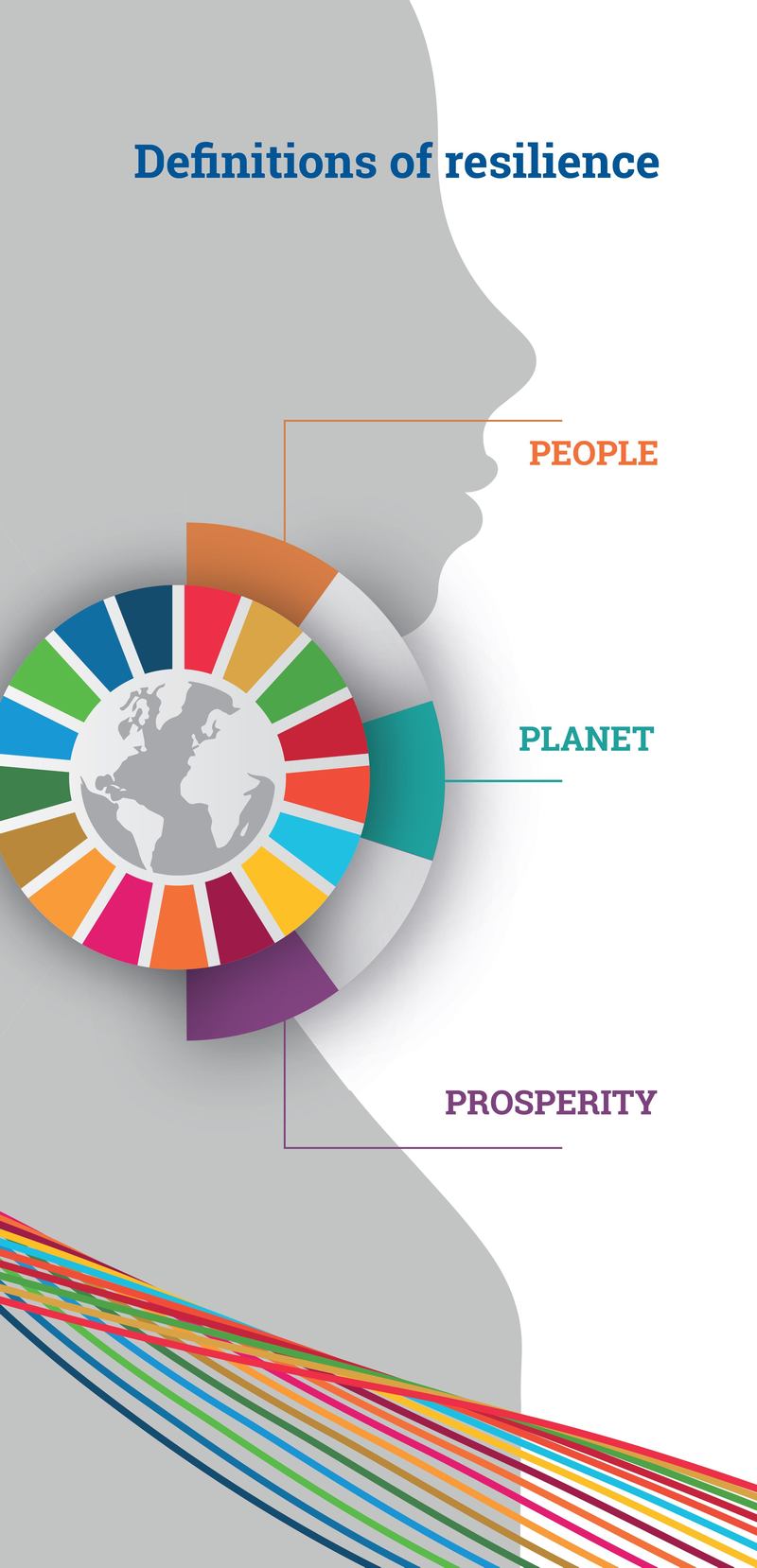
The GAR 2023 calls for resilience to be the foundation of efforts to achieve the Sustainable Development Goals by addressing ‘resilience deficits’ across all goals, ensuring a balance between people (social resilience), planet (environmental resilience), and prosperity (economic resilience):
People
- Access to disaster early-warning systems
- Increasing drought risk and food insecurity
- Forced displacement and negative education outcomes
Planet
- Increasing water stress and population growth
- Increase land degradation and biodiversity loss
- Increased heat stress and energy consumption
- Increased air pollution and mortality
Prosperity
- Increasing flood risk and urbanization
- Increasing heat and poverty
- Risk of climate change to coastal infrastructure
The report makes a number of recommendations for the unprecedented scaling-up of resilience investment and adaptation from both public and private sectors, particularly for the most vulnerable countries.
Mapping resilience deficits and showcasing positive actions
The maps in this report highlight a number of these resilience deficits that are holding back achievement of key Sustainable Development Goals.
The report’s action case examples show that this is not inevitable, and how action is possible on every continent to stop the worsening spiral of risk and disasters and to accelerate SDG target achievement.

Resilience deficit: People
The number of recorded disasters has increased fivefold over the past 50 years and this trend is accelerating. Exposure is increasing in countries where there is already a large number of people affected by disasters.
Early warnings for all
Provided risk reduction measures are taken, increased exposure does not necessarily need to result in increasing casualties and economic costs. Early-warning systems (EWS) are already proving themselves effective in reducing the impact of hazards.
62 million people directly affected by disaster in the last two decades live in countries without operational EWS. This means that without increased investment in resilience-building through extending early-warning-system coverage, developing countries are projected to have higher numbers of people affected by hazards as population growth continues.
Fortunately most of the countries with the greatest exposure to hazards already have early warning systems. These systems are already proving themselves effective in reducing the impact of hazards. However, even in places where early warning systems are in place, many have gaps , which need to be urgently addressed.
The United Nations Secretary-General launched the Early Warnings for All (EW4All) Initiative in 2022, to ensure the whole world is covered by an EWS by the end of 2027. To save lives and livelihoods, EWSs need to be multi-hazard and connected to early action.
Action case: Barbados – Fully exploiting the potential of early-warning systems
As a Caribbean island, Barbados is regularly exposed to numerous hazards, including floods and hurricanes. In 2021, the island was affected by ash coming from a volcanic eruption in Saint Vincent and the Grenadines, which led to closure of the main airport, while dealing with the COVID-19 pandemic and was shortly after hit by Hurricane Elsa, the first hurricane to affect Barbados in over 65 years.
The country’s early warning system combines data sources ranging from the Pacific Tsunami Warning Center to Google Play to reduce the impact of all types of meteorological hazards, and integrates disease forecasting – demonstrating the expansive capacity and versatility of these systems.
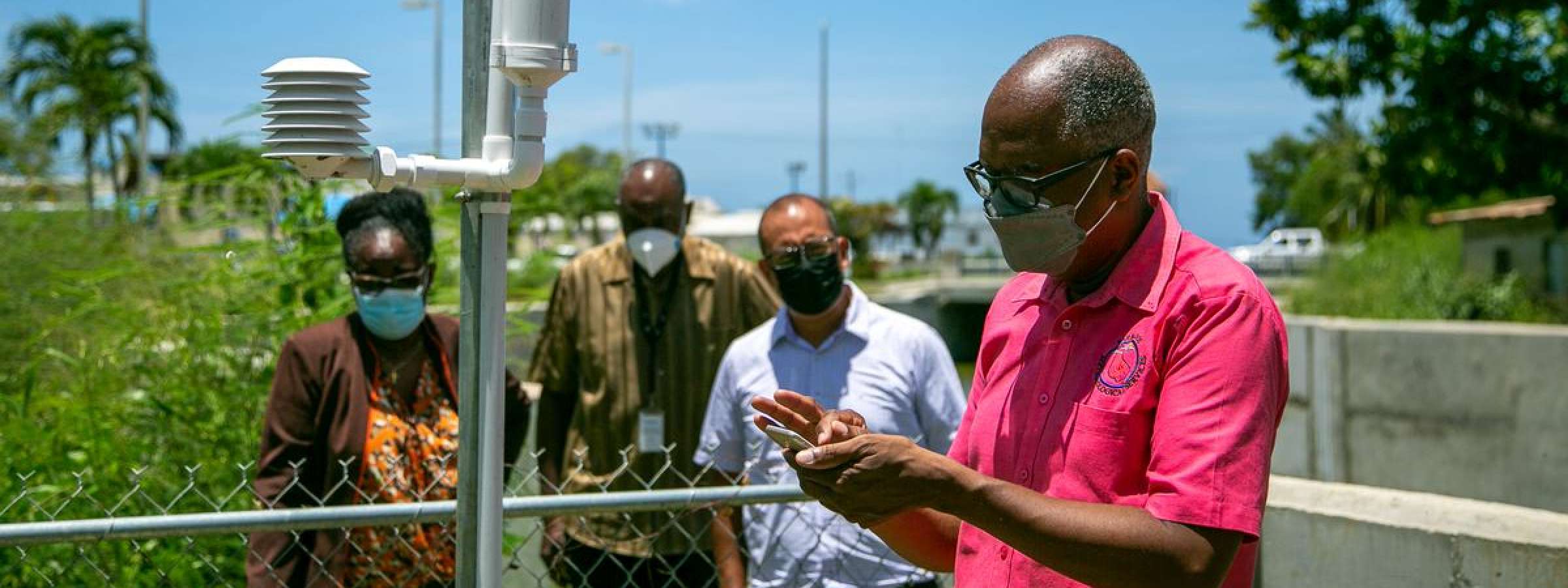
Countering the impacts of a drying living environment
The GAR 2023 shows drought is dramatically increasing with knock-on effects on global food security, employment and education.
Droughts have already resulted in two billion people now living under water stress and an 80% increase in the risk of crop failure and hunger in sub-Saharan Africa and South East Asia.
Action case: Sahel region – Accelerating the greening of the Sahara through the Great Green Wall initiative
A Great Green Wall (GGW) of vegetation is being created along the southern edge of the Sahara, as a durable response to counter desertification, and improve the livelihoods of the people who are largely dependent on rain-fed agriculture and livestock.
The planting of GGW vegetation provides numerous benefits as it sequesters carbon and improves water retention, thus lowering the risk of floods and improving soil productivity. The vegetation also provides shade and food for animals. While the GGW mitigates droughts and floods and provides a range of economic and social benefits, managing slow-onset variables requires constant review and adaptation.
Resilience deficit: Planet
People can only prosper in a world where natural systems are nurtured and sustained. Several SDG targets are designed to “protect the planet from degradation, including through sustainable consumption and production, sustainably managing its natural resources and taking urgent action on climate change, so that it can support the needs of the present and future generations.”
Living on a hotter planet
Without action to tackle more frequent and intense heat, the next generation are being condemned to bleaker future with 920 million children exposed to water scarcity in 2020 alone, one of several hazards that is driving the displacement of millions of children in developing countries.
Action case: India – Combating heat using a participatory approach
India has implemented heat action plans (HAPs) in cities across the country to reduce exposure, save lives and reduce over-reliance on air conditioning, through the broad participation of the public and local governments.
Since the success of the first HAP in Ahmedabad, in 2013, the programme has expanded to 23 of India’s most heat-prone states. HAPs have been credited with saving thousands of lives – largely due to their participatory and flexible approach.
Resilience deficit: Prosperity
Ensuring that “all human beings can enjoy prosperous and fulfilling lives and that economic, social and technological progress occurs in harmony with nature” is a central facet of the Sustainable Development Goals. Several key SDG targets highlight the importance of ensuring current and future prosperity across the globe.
There are cascading impacts on the labour market as temperatures rise and it becomes simply too hot to work. Labour productivity is halved at 34°C with productivity losses equivalent to 80 million full-time jobs when the world surpasses 1.5°C of warming, pushing ever greater numbers of people into poverty.
Infrastructure adaptation
With over 80 per cent of the volume of global trade in goods carried by sea, seaports are key nodes in the network of global supply chains, providing critical access to global markets. Global port-specific risk from natural hazards has been estimated at US$ 7.5 billion per year, with 32 per cent of the risk attributed to tropical cyclone impacts, and an additional US$ 63.1 billion of trade estimated to be at risk.
Maritime trade is expected to triple by 2050 and climate-driven hazards are likely to increase, so significant acceleration of investment in climate change adaptation and resilience-building for ports is needed. Major scaling-up of affordable investment in infrastructure adaptation will be critical for developing countries, particularly vulnerable small island developing states (SIDS) that are sea-locked and therefore rely especially on their ports and airports.
Action case: Jamaica and Saint Lucia – Safeguarding ports with long-term investment
Flooding and hurricanes are expected to intensify in Jamaica and Saint Lucia. Economic losses due to storms and floods amount to approximately 7 per cent of GDP in Jamaica and 2 per cent in Saint Lucia – primarily due to the interruption of operations at the ports and airports in the country, and damage caused to infrastructure.
Both countries have developed long-term plans and governance structures to solicit investments to upgrade their transportation networks, offsetting the steadily increasing pressures caused by climate change, and key to generating economic growth.
Urgent action is needed to build resilience for sustainable development
The GAR 2023 calls for the unprecedented scaling-up of resilience investment and adaptation from both public and private sectors, particularly for the most vulnerable countries. Delay will increase the costs: action is needed now. Readjusting development pathways requires re-examining how prosperity is measured, and greater emphasis on resilience as key to sustainable development today and in the future.
The following are key lessons from this report:
- Hard-won economic and developments gains are in danger from the growing number of disasters, with global heating the prime contributor.
- The GAR 2023 report presents new analysis mapping hazards and disasters such as drought and sea-level rise, showing a dramatic rise, with knock-on effects on global food security, employment and education.
- The impacts cascade onto the labour market as temperatures rise and it simply becomes too hot to work. Labour productivity is halved at 34°C, and an estimated 80 million full-time jobs will be lost if the world surpasses 1.5°C of warming, pushing ever greater numbers of people into poverty.
- Climate impacts also led to 920 million children exposed to water scarcity in 2020, a major hazard resulting in displacement. Extreme weather events in 2022, such as the Pakistan floods and the Horn of Africa drought, led to 12 million displacements of children, in countries with some of the world’s lowest literacy rates.
- Investing earlier in resilience and adaptation can avoid costs of hazard impacts, and save lives and resources. Replacing destroyed crops, infrastructure and electricity networks costs more than preventing disasters in the first place.
- Resilience can be strengthened to withstand and respond to shocks. This includes investments in early warning systems, with which the benefits triple in vulnerable contexts because of their proven ability to reduce damage. Currently, In East and North-East Asia, for instance, disaster losses would be reduced by an estimated US$67 billion a year.
- Countries can learn from examples explored in the GAR like the Cidanau Watershed in Indonesia, which introduced payments to farmers to converse biodiversity and fresh water supplies. Other examples include the Great Green Wall to counteract desertification in the Sahel, and measures taken by Small Island Developing States facing sea level rise.
- Building resilience will require the unprecedented scaling-up of resilience investment and adaptation from both public and private sectors, particularly for the most vulnerable countries. Delay will increase the costs: action is needed now.

By addressing risks and building resilience, we can strike a balance between the needs of people, the planet and prosperity for future generations.
Changes are needed to flip systems that are creating risk and instead build resilience as the bedrock for sustainable development. And to guide these changes, countries and development partners need to look beyond single SDG indicators to consider the overall impact on people, the planet and prosperity.
Measuring what is valued reflects societal priorities and provides the basis for the policies to follow. This is why it has never been more important that we understand how to measure and achieve resilience.
We hope this report will advance this approach and spark the changes needed to achieve development that is resilient for all.
Mami Mizutori
Special Representative of the UN Secretary-General for Disaster Risk Reduction
Head of the United Nations Office for Disaster Risk Reduction
Related and further reading
